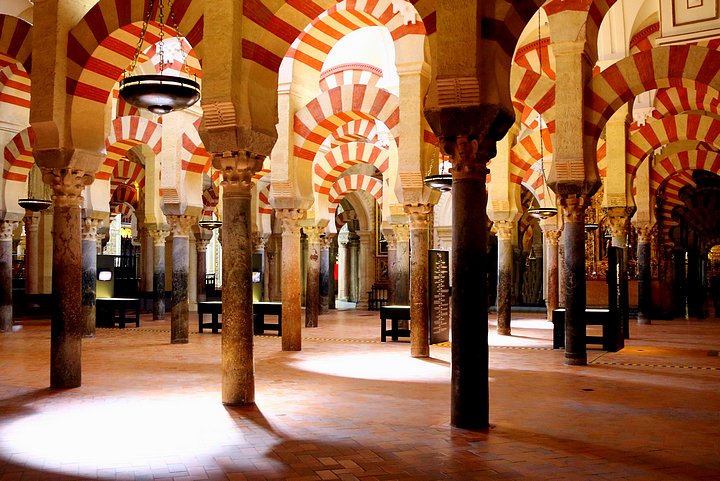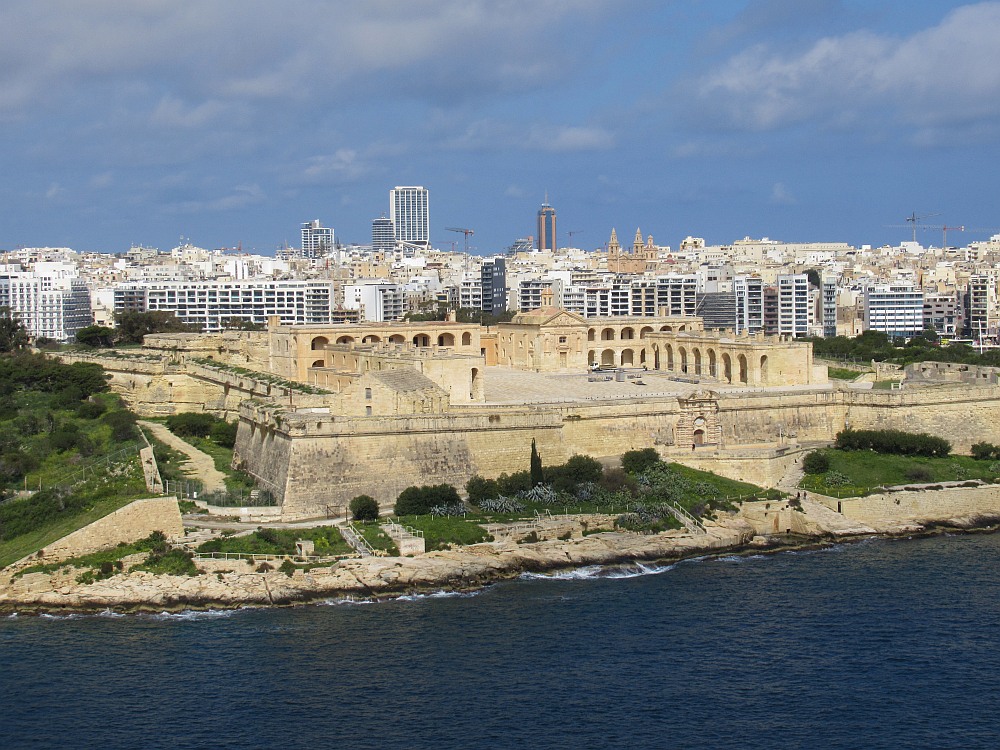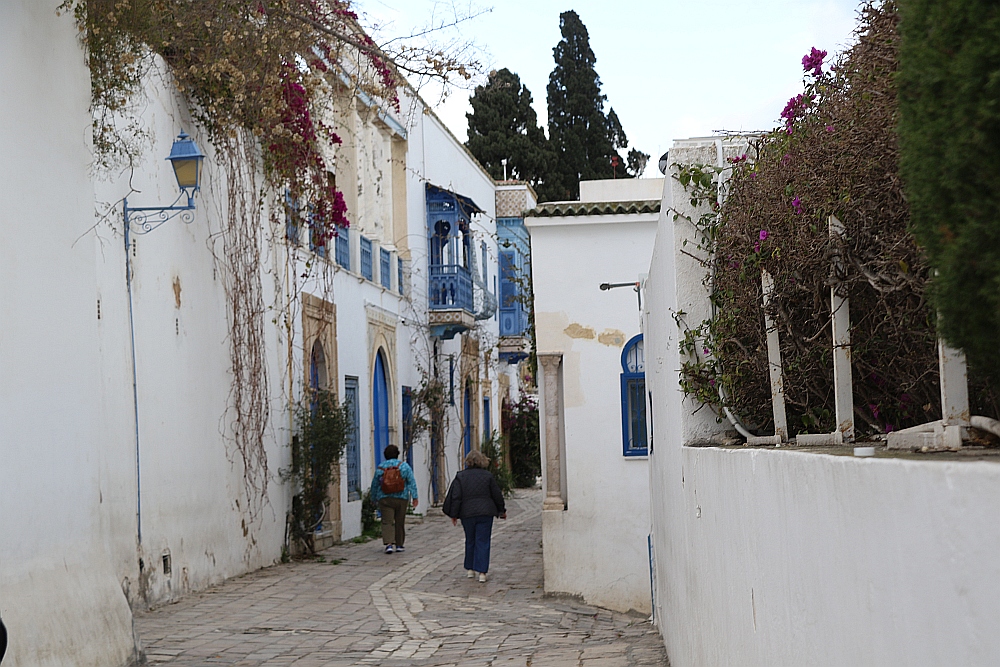Back Roads Of Iberia: Spanish Paradores and Portuguese Pousadas Day 11
Back Roads Of Iberia: Spanish Paradores and Portuguese Pousadas
Day 11 - Monday, April 3, 2017 - Travel to Úbeda; Visit Córdoba; Explore the Mezquita; Horse-drawn Carriage Ride
We woke up at 7:00 and at 9:00 we left the parador saying goodbye to Ronda. The children were on their way to school, the shopkeepers were opening the shutters for business, and we were on the road again.
The morning temperature in Ronda was 43 degrees, consistent for the springtime weather in this area of Spain. We drove through peaceful green valleys with oak trees, grazing black pigs, and dry stone rock walls dividing the plots of land.
The small white buildings of the villages glistened in the early morning sunshine. The red poppies we have come to love in our spring trips to Europe were just beginning to bloom along the roadways.
As we left the mountains and drove into the rolling hills there were more and more wind turbines. The dichotomy of the new technology and the old white washed stone houses was hard to miss.
The morning stop was at 10:50 at a highway café near Lucena. We had 15 minutes for a coffee and for Luis to take a short break from behind the wheel. In another 30 minutes, we reached Córdoba, a former Roman settlement and an important Islamic community in the 10th century.
Rikardo talked to us about the Gypsy population in Spain. They are no longer nomads in this area; they are a big part of the stable society. The manager of the carriage company was a Gypsy and Rikardo told us about his contribution to the economy.
Rikardo explained about the immigration policies of Spain. Because the economy in Spain is low right now, no immigrants want to come to Spain or to Portugal when they can go to Germany or France where they have more of a chance to make good money.
The problem in both Spain and Portugal is that the young people finish their schooling and then they move to France or Germany. There is a serious "brain drain" and Spain is losing its young people.
Our visit to the city of Córdoba began with a carriage ride through the old city, primarily the Moorish neighborhood. Today, Córdoba is known primarily for the Mezquita but also the charm of the narrow side streets throughout the old city.
The carriage ride gave us a good perspective of the narrow streets and because Rikardo was in the front with his friend the owner, we had a running commentary on what we were seeing.
After thanking our driver, we walked to the corner of the Mezquita for free time for lunch. We asked the lady at the ice cream shop if there was a kebab café nearby. Thinking that this once Arab stronghold would have several opportunities for a kebab lunch, she surprised us by showing us the one that was many blocks away.
After walking for about 15 minutes, we found “Estambul” and we asked for two kebabs to go. The shop was very busy so it was about 10 more minutes until we got our lunch. The walk and the wait were worth it! We took our lunch to a bench along the promenade and relaxed as we watched the people scurrying to the old city.
Back at 2:15 at our meeting point, we joined the group and David the local guide from Córdoba, who was also a Trip Leader for OAT, began our tour. He began the discussion by telling us that during the Arab times in Córdoba the Jews, Arabs, and Christians all lived together in the city in harmony.
When the Arabs came to the city after 711, they found a perfect place for their capital. The Romans had already built the roads, the water system, and the fort for protection. They built their mosque on the site of the old Roman temple.
The Mezquita or mosque was made of red brick and yellow limestone with double arches for stability. When the Spanish under King Ferdinand conquered the city, he thought the building was so beautiful and in such great condition that he decided not to destroy it. He built a Catholic church inside of the mosque.
Now an active cathedral, mass was celebrated daily, but visitors come mainly to see the beauty of the architecture of the mosque. We saw pilgrims of many faiths praying in the church.
David was a wonderful storyteller and helped us to understand not what the building was, but what it represented. We continued our walk and visited the small neighborhoods, each with its own tiny plaza.
In the Jewish neighborhood we saw the statue of Moses Ben Maimonides, a Córdoba native from the year 1135. He was expelled from the country by the Christians and went to Cairo. He became the personal physician of the Sultan Saladin. Maimonides is still known today as the most important writer of Jewish law and ethics.
We gathered back at the ice cream shop at 4:00 and then walked to meet Luis and the bus. By the time we reached Úbeda, in the province of Jaén it was 6:30. We walked to our parador because the bus could not get close to the Vázquez de Molina Square.
Our lodging was the palace of Dom Fernando Ortego Salido, the Dean of Malaga and Chaplin of the church nearby. Typical of the Spanish paradores we have stayed in, the antique furniture was very historic and gave us the feeling of actually living in a palace of the time period.
Having had two big meals already today, we opted out of dinner and appreciated the quiet of our room and the sounds of the nearby church bells of the Sacred Chapel of the Savior of the World.
Spain is traditionally a strongly religious country (Roman Catholicism). However, only 76% of Spaniards now identify themselves as Catholics, and less than 20% are regular churchgoers. Due to recent immigration, 3% of the population is now Muslim.
http://www.eupedia.com/spain/trivia.shtml
Accommodations: Parador de Úbeda Hotel - - - Meal: B & D
To receive $100 per person off your first reservation with OAT, mention the following information when reserving your Overseas Adventure Travel Trip:
Mr. Victor Garcia Customer #673062
Overseas Adventure Travel:
Back Roads Of Iberia: Spanish Paradores and Portuguese Pousadas
Rikardo López Elduayen
Comments
I am enjoying your journal. Steve and I have been to Portugal several times and learned more about places we had visited. OAT does a great job and we love your journals. Thanks for taking the time to post. Annmarie
What a lovely city. I also looked at the Google Posts and they are really interesting. Thanks.
Post a Comment!Thanks for the info on the Jewish aspects of Cordoba and Maimonides.
Featured Journal
Day 18: Mediterranean Navigation
Day 18 - Wednesday, March 19, 2025 – Disembark Ship & Return to USA
It was a dark and rainy morning when we put our luggage outside of our cabin door at 4:15. We met three of our fellow passengers also on the same flight...










